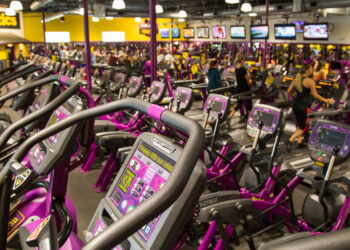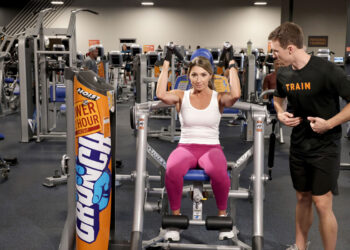Today, health clubs have the option to upgrade their aquatic systems to modern technology that will provide a safer and healthier environment for both staff and members.
Safety
The aquatic pump room is, without doubt, one of the most challenging locations to provide safety and health. After all, if two of the most commonly used products in the “pump” room are accidentally mixed together, the result is the formation of a gas that is deadly to all life forms. It is an ironic fact that the very same chemicals that keep the water safe for swimmers, when combined in solution in the water, will cause irreparable harm, if they are combined in a barrel and their gas is released into the surrounding air. Exposure to small amounts of chlorine gas can irritate mucous membranes, the respiratory system and the skin. At high concentrations, the gas can cause chest pain and difficulty breathing, and even death.
Such a chemical accident occurred in Anchorage, AK in 2002 when a maintenance worker was critically injured and dozens of children were hurt by an accidental release of chlorine gas at the Alaska Pacific University campus swimming pool. The early morning shift had just begun and the swim team was getting ready to start their training routine. As so often happens, the early morning maintenance routine of checking the drums, and ensuring that they were filled, had become just that, a routine. The crucial difference was that the inspection was being done by a new, young staff member. The task was straightforward: make certain that the drums are intact and if they require filling, use a mask, goggles and gloves and carefully fill the drum. One drum did need filling, so he followed procedure and added product. Unfortunately he poured Muriatic Acid into the Liquid Chlorine drum!
“‘Up to 60 children and adults were quickly evacuated, a few of them vomiting, spitting, and in tears. ‘More than 30 were taken to hospitals by ambulance or private vehicle,’ said Anchorage Fire Department spokesman Tom Kempton.” (Kenai Peninsula On-line- AK newspaper – web-posted Sunday, September 29, 2002).
Prevent Accidents With Proper Training:
1. The pump room and hazardous areas should be locked, marked “Staff Only” and this should be strictly enforced.
2. Chlorine and Muriatic Acid containers need to be clearly marked and doublesealed.3. Have CPO® trained and certified operators on staff
4. Designate properly trained and qualified staff members to carry out chemical checks and adjustments.
5. Proper safety equipment and spillresponse equipment needs to be on-hand and functional, and periodic drills should be scheduled.
Prevent Accidents by Upgrading Equipment
Your club can invest in newer technologies, such as Chlorine Generation and Automation Technologies, and thereby remove 90% of all hazardous products from the club floor and replace them with products that are as harmless as the salt on our food and the “fizz” in our soft drink.
The process is simple. Choose your equipment supplier carefully as your supplier will ensure correct sizing, and your ongoing success through knowledgeable and responsive support. Install your chlorine generation equipment, and add salt to the pool or spa water. The salt recycles itself through the chlorine generation process and the only measurable salt that is lost happens when filters are cleaned and water is exhausted to waste.
Traditional chlorine is now only required to treat any biological accident in the pool, and it should be kept in sealed one-pound pouches (or perhaps larger containers if the pool size is substantial). Eliminate Muriatic Acid tanks by switching to CO2 (Carbon Dioxide) which is delivered to the site in 100-pound sealed tanks.
Health
This type of Chlorine Generation and Automation System provides a much healthier aquatic environment with reduced chlorine odors and many other swimmer benefits. Here are some user comments:
• Bob Norwood of The Summit of Kallispell, MT reported that, “Some people who are allergic to the standard method of chlorinating have found that they can tolerate the new salt water. We also had one of our aerobic instructors unable to continue teaching in the pool because of her reaction to the water, but with the new system she could start teaching again.”
• Karen Alexander of Maryland Athletic Club, recently reported members claiming a “reduction in pain” due to the salt water after a therapy class. “These participants have been through three weeks of my program while it was Ozone, and they noticed this drastic difference as soon as it was switched over…Amazing! Two of the women…described it as ‘a big Epson salt bath’ and very therapeutic,” said Alexander.
Clearly, this type of conversion to Chlorine Generation and Automation Technologies not only improves the health and safety aspects of a health club’s aquatic environment, it is also therapeutic!
Timothy Petsch is the President and Co-Owner of TMI Salt Pure Corp. He is a CPO® instructor/trainer and a National Aquatic Consultant with over 20 years commercial aquatic experience. He can be contacted at 800.818.8266, or by email attimothy@tmisaltpure.com.








